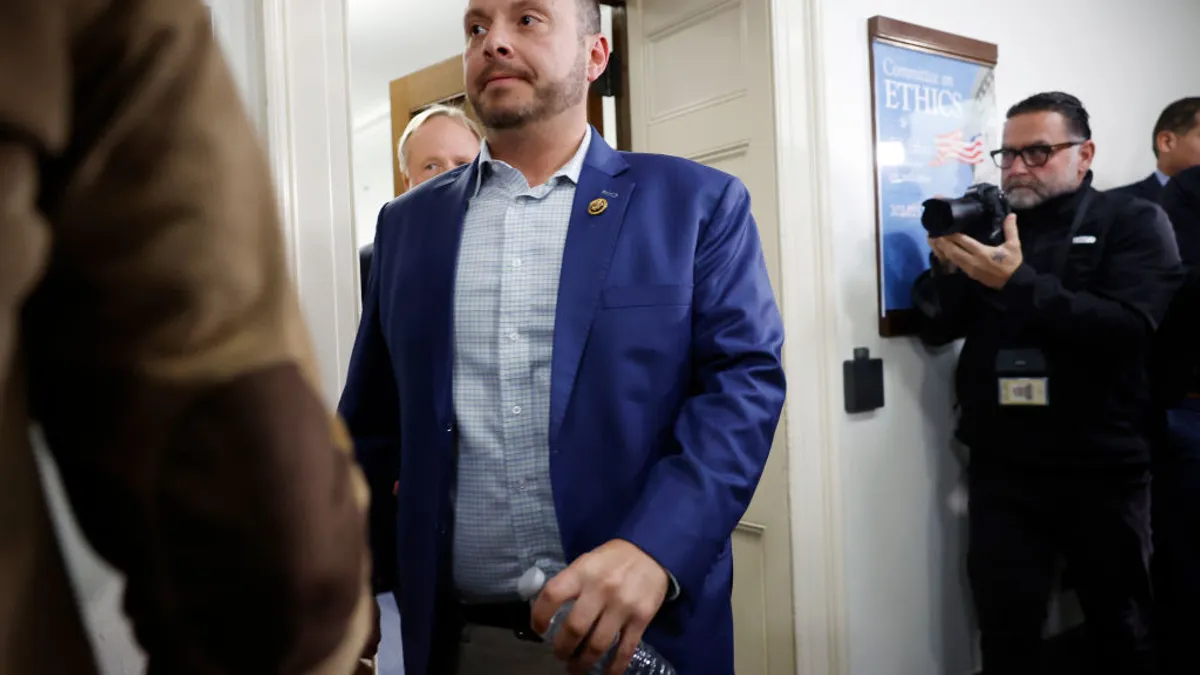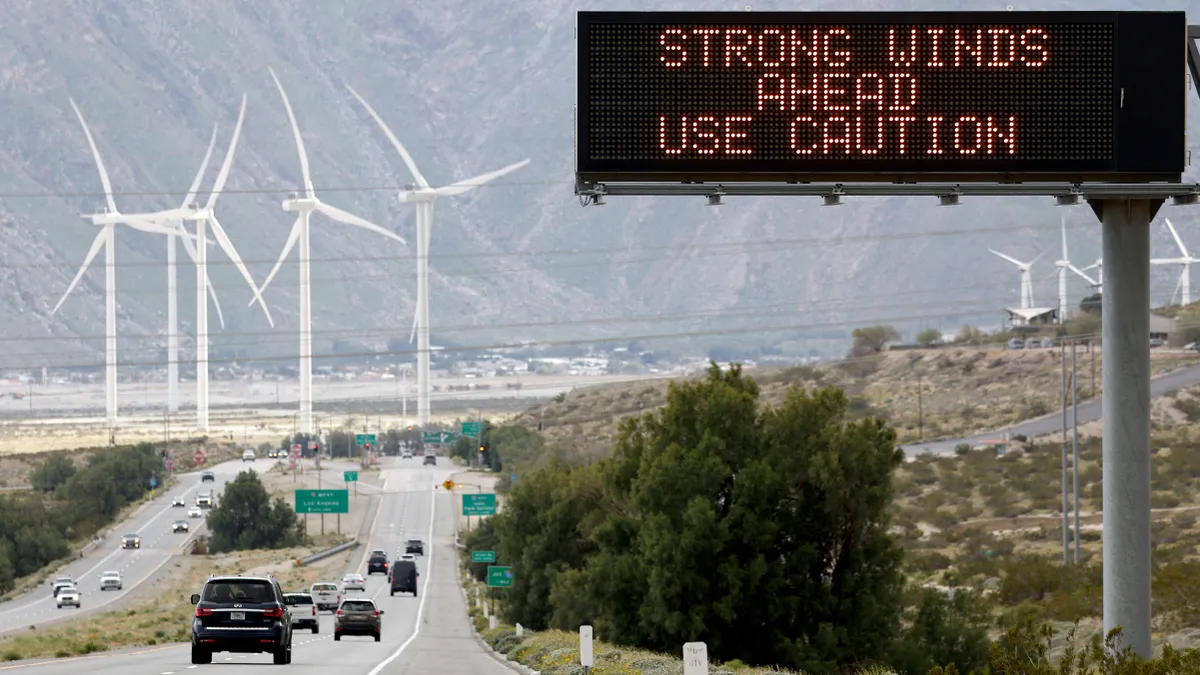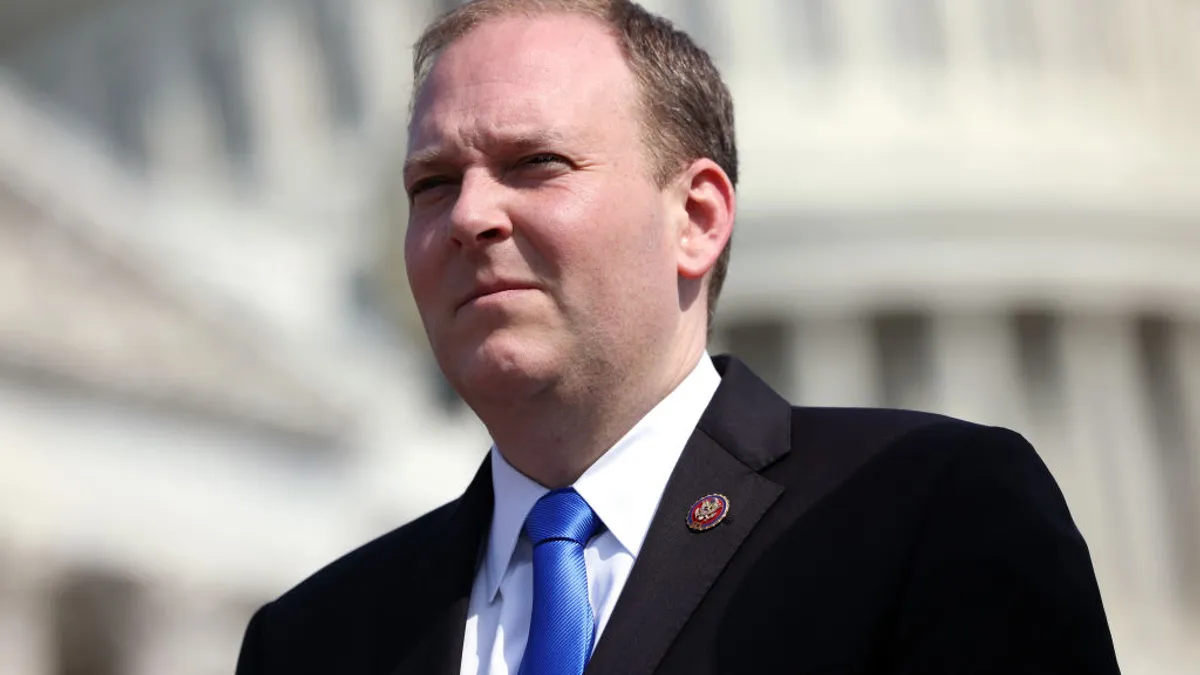The fierce debates between solar interests and utilities over solar policies show no signs of slowing down this year.
The latest report from North Carolina Clean Energy Technology Center (CETC) found a total of 212 policy debates over solar compensation and rates took place last year, a jump from 175 in 2015. The debates ranged from fixed charges and net metering policies to community solar programs and third party ownership regulations.
Yet some new trends are beginning to emerge from the discussions, according to Autumn Proudlove, senior policy analyst for the CETC. Those trends include tweaks to net metering policies and a greater emphasis on collaboration between power sector officials and solar advocates.
“Fewer states are making tweaks to net metering and there is a greater emphasis on successor tariffs and broader credit rate reforms and there are completely innovative policy designs,” Proudlove told Utility Dive. “And while we still see a lot of controversial debates and messy proceedings, the collaborative settlement in Colorado between Xcel Energy and solar advocates was monumental and has the potential to set a standard for future proceedings.”
Solar policy by the numbers
Policy actions over solar are moving out of traditional solar states like California, Hawaii and Nevada, Proudlove said. More nascent markets like Arkansas, New Hampshire and Indiana have become key battlegrounds in solar policy debates.
Another key trend was the changing categories of policy action. More of the discussions focused on changing net metering policies or compensation rates, while there were fewer debates on broader distributed generation valuation or cost-benefit analyses.
"Many states have conducted studies and are ready to take action,” Proudlove said. A prime example of this is Utah. Incumbent utility Rocky Mountain Power proposed a three-part rate change last year for rooftop solar customers after completing the state PUC’s ordered valuation study. Maine just completed a heated successor tariff proceeding and Louisiana’s current net metering proceeding follows its 2015 study, she added.
And Arizona will also return to the spotlight for another round of debates over new rates for solar customers. Two utilities proposed mandatory demand charges on part or all of their residential customers, while also seeking to reduce the net metering rate. And Oregon’s successor tariff proceeding will try to impose a new compensation rate after its value of solar study wraps up this year, Proudlove said. Other states undergoing similar debates are Vermont, Nevada and Montana.
“A lot of states choose to defer policy decisions on policy until their cost-benefit studies are complete,” Proudlove said. “The policy is then a logical progression.”
Rate design and successor tariffs
On the rate side of the debate, requests for fixed charges climbed, but the number of residential demand charge proposals fell, Proudlove noted. And both these fees and rate design proposals found little success with regulators. Not one regulatory commission approved a mandatory residential demand charge, while 79% of fixed charge requests were reduced or rejected outright, Proudlove said.
Meanwhile, utilities and regulators are taking a new approach to designing the net metering credit for exported energy. Some are innovative, but often untested policy designs. “The first few successor tariffs were less innovative but we are now seeing policy designs completely different than those implemented anywhere,” Proudlove said.
Two utilities, like SWEPCO in Texas and the Indiana Public Service Commission, are considering buy-all, sell-all plans with avoided cost compensation rates.
When a buy-all, sell-all plan lowers the compensation rate to the avoided cost, it is very detrimental to the solar value proposition, Proudlove said. “The solar owner doesn’t even get a retail rate equivalent for what is self-consumed as they would in a net billing arrangement.”
For New Hampshire’s successor tariff, stakeholders have put forward familiar fixed and demand charges. But the state's Consumer Advocate also proposed a market-based incentive program similar to one proposed in Maine and in an Arizona rate case that offers time-of-use compensation to refine the price signal or a fixed compensation that steps down with increasing penetration to drive early adoption.
In Massachusetts, a “Next Generation Incentive” would offer changes to the net metering credit that steps down as well as changes to the state’s Solar Renewable Energy Credit program and compensation “adders” designed to serve as price signals to guide growth. While the successor tariff includes “thoughtful elements such as long-term price guarantees to lower financing costs, land use standards, and incentives for pairing solar and storage,” it lacks protection for community solar programs, said Peter Shattuck, clean energy initiative director of Acadia Center. But protections seem to be lacking for community solar and for solar programs, he added.
Proudlove sees the “new and different ideas” for an NEM successor tariff as “one of the most potentially important” of last year’s policy activities because “they could affect the future of solar.” The proposals “will be examined by other states, influence thinking, and could suggest what is coming in 2017,” she said.
The biggest policy debates for solar
While the numbers point to a wide variety of policy proceedings, some outsized debates will have huge implications for other hearings.
Among the biggest policy anomalies last year was a Southern Company subsidiary's request to raise its residential fixed charge by 155% or $48.06, Proudlove said.
“It was shocking to see such a huge dollar increase. A few utilities have proposed higher percentage increases but that dollar figure blows all the other big increases out of the water,” Proudlove said. Gulf Power’s rate case will likely be one of the biggest policy fights of 2017, according to Karl Rabago, executive director of Pace Energy and Climate Center.
The fixed charge increase is “so egregious, on top of the highest fixed charge in Florida, that customers might have an incentive to take an optional three-part rate,” Rabago told Utility Dive.
Rick Delahaya, a Southern Company spokesperson, said Gulf Power is offering two optional demand rates along with a smaller fixed charge increase and lower per-kWh rates. They are “part of the pricing package to appeal to customers who want to take greater control of their demand and energy consumption to conserve energy and save money,” he told Utility Dive.
Rabago called the proposed demand charges in the three-part rate especially objectionable because most Gulf Power customers “have very limited options to reduce their demand, much less any ability to know when and whether they have registered a monthly peak.”
As of today, he said, the utility has offered its customers no tools to track or manage their demand ahead of regulatory approval for the rates.
Delahaya said one of the demand charges is aimed at customers who can limit "simultaneous use of major appliances."
It is “proportional to a customer’s personal peak usage each month,” he said. “Customers with low usage and very low demand spikes may benefit without any usage changes."
The other demand charge option is aimed at customers who are able to shift their usage to off-peak time periods and customers who have reduced their usage with DG, Delahaya said. It is a “time-of-use demand rate” that allows savings for customers who can change the time of day they use electricity."
The proposed three-part rate can, according to Delahaya, “better align cost causation with revenue recovery” by sending “improved price signals to customers on how their actions impact system costs.”
Expert witnesses called by Gulf Power during hearings on its proposal acknowledged the three-part rate’s “additional complexity.” But promised efforts from the utility to educate its customers toward acceptance and participation.
Delahaya said there is already educational information on the Gulf Power website. “If the optional demand rates are approved, meters of customers who choose the demand rate will be programmed for the rate and will provide the information customers need to manage their load,” he added.
Arizona & Hawaii
A similar rate case confrontation between solar advocates and Arizona Public Service over a proposed three-part rate design is scheduled for March. Like Gulf Power, APS wants a fixed charge, a demand charge and a reduced volumetric rate.
“Demand charges are among the policy developments last year that have the most potential to slow the growth of solar or reduce its value to customers,” Proudlove said.
There were fewer demand charges proposed in 2016, but two of the eleven proposed or pending were from APS and UniSource Energy in Arizona, she added. “Other states will likely be watching to see if the Arizona demand charges are approved and, if they are, whether customers accept them or there is a customer backlash.”
Hawaii’s decision to terminate its retail rate net metering program also continues to reverberate. The Commission replaced the program with two successor tariffs: the grid supply (CGS) and the self-supply (CSS). The CGS option compensated customers for their exported energy at a fixed rate slightly lower than retail depending on the Island. The CSS allowed for inadvertent exportation, but only paid customers a fixed minimum bill.
In late 2016, the Hawaiian Electric Company utilities reached the limit on the distributed solar that could be installed with "grid-supply" compensation, the paper reported. A drastic decline of installations sent the state solar industry into turmoil.
While regulators ponder a more permanent solution to replace the net metering program, the state’s solar industry is at “the bleeding edge of what everyone else talks about in the abstract," said Marco Mangelsdorf, the president of ProVision Solar and director of Hawaii Island Energy Cooperative.
The CSS compensation alternative allows solar owners some benefit by using onsite generation. “Self-supply and battery storage are here and now, in our faces, whether we’re ready or not, and we’re not ready, if looking at the present and near-term likely adoption rate is any indication,” Mangelsdorf said.
The commission was forced to impose the new tariff to protect the state’s overburdened grid, he acknowledged. But the Hawaii solar industry’s future is now uncertain. While policy leaders plan for a 100% renewables by 2040 mandate, “I’m concerned about making payroll and paying bills in the next six to 12 months and 23 years from now is a lifetime away,” he said.
Though some argue self-supply is the solution that the industry must adjust to, it is not without challenges for HECO and its grid, Mangelsdorf added. “We in the industry in the Aloha State are afraid.”
The emerging path to a policy truce
The most impactful solar policy action of 2016, Proudlove said, was probably the Nevada commission’s decision to establish a grandfathering clause for its existing solar customers after excluding such a provision in its contentious decision in 2015.
“So many other states saw what happened there and took extra care to make sure that, whatever changes they proposed, grandfathering would be included,” she said.
Nevada commissioners also restored the retail rate net metering credit for NV Energy subsidiary Sierra Pacific Power’s service territory, though the parent utility is contesting the decision.
“The Commission made an effort to level a challenging prior position,” said Rose McKinney-James, managing principal at consultancy Energy Works and a former Nevada Commissioner. The ruling's tone suggested "a willingness to work with the solar industry toward an equitable fix.”
Stakeholders still face contentious debates in the Sierra Pacific case, a Nevada Power rate case, and the state’s Energy Choice ballot initiative, she added.
Colorado
Another solar policy action that spells out good news for the future of the solar industry was the settlement agreement in Colorado.
Xcel Energy Colorado had proposed a new residential rate structure that would have increased the fixed charge, which drew fire from solar advocates. A settlement on that rate and several other contentious issues was hammered out by Xcel Energy, the Colorado Solar Energy Industries Association and other stakeholders.
In the settlement, Xcel dropped the fixed charge increase, and the stakeholders agreed to a trial time-of-use rate, a demand charge rate pilot, and several other policy provisions. At the time, several participants said the durability of the agreement depended on the ongoing stakeholder process for which it provided.
Three of the four stakeholder groups have now met and the outcome so far is encouraging, said Rebecca Cantwell, executive director of Colorado SEIA.
The first meeting of a group working on renewables programs produced meaningful discussions. A battery policy group has made good progress over a dozen hours of meetings, despite encountering disputes that will likely go to the commission, Cantwell said. And stakeholders, the utility and a consultant will soon begin work on the new pilot and trial rates.
Cantwell is “optimistic” solar advocates and Xcel will be able to work together effectively. “We still expect the PUC to play an important role, but this gives us a way to have informal conversations about complex issues and to try first to seek common ground.”
California & New York
California and New York are two other states that are bringing traditional adversaries together to pioneer innovative grid modernization designs.
New York’s Reforming the Energy Vision docket initiated Phase II of its Value of Distributed Energy Resources (DER) proceeding after capturing national interest with its proposed “LMP + D” valuation methodology.
The LMP+D formula describes DER value as its market price (locational marginal price [LMP]) plus its value to the distribution system (D). “It is impactful and innovative and other states will be looking to it, though many states don’t have the technical capability yet to determine the D value,” Proudlove said.
California’s regulators moved ahead with an net metering successor tariff and other initiatives. More significantly, they approved the Distributed Energy Resources Action Plan which, Commission President Michael Picker told Utility Dive, lays out the roadmap for where California needs to go through 2018.
“It is more a roadmap, or a walk, jog, run strategy,” Picker said. “It shows us where we need to go and what we need to do to get there but, by 2020, there will be many changes in this very quickly acting system.”
Proudlove noted that much of the work in these two proceedings is focused on getting beyond net metering by identifying marketable locational and temporal values for DER.
Progress nationally “varies by state and utility territory,” she said. “States with established power markets are much further along.”
In most proceedings, there is “a lot of consensus" on temporal values exemplified by the many time varying rate proposals and there is “some consensus” on locational value, she added. “But technical limitations still make implementation a challenge.”
Illinois and Rhode Island added community solar policies during the year, expanding the potential for a form of solar approved of by both utilities and advocates.
There are now 16 states with community solar policy guidance and 13 did policy work last year, CETC reports. Much of it was spurred by net metering proceedings. “If a state is reconsidering its NEM credit rate, it is probably going to change the community solar credit rate, too,” Proudlove said.
Down the road
On the federal level, Proudlove does not expect solar will be impacted significantly by the ongoing political turmoil in Washington D.C.
“There is only uncertainty at this point about what the changes at the federal level might mean,” she said. “But with the exception of the investment tax credit, solar policy has come and will continue to come from state level actions.”
The partisan divide accentuated by the new administration is unlikely to have a significant impact, she added. “The issues debated at the state level seem to be less about partisan politics than about the divide between utilities and DG advocates.”






















